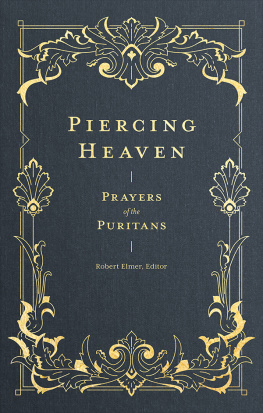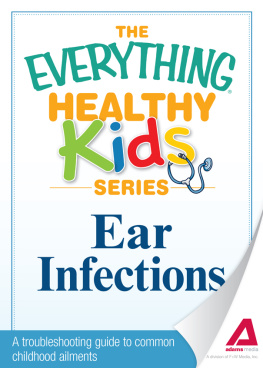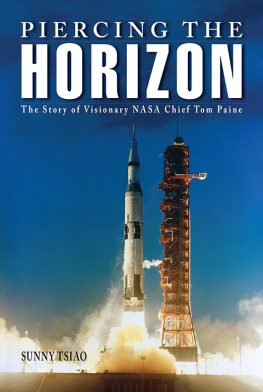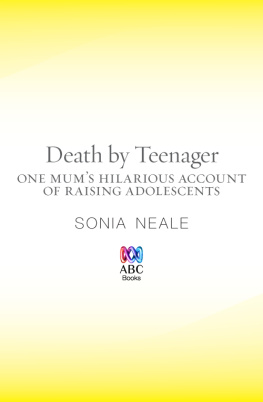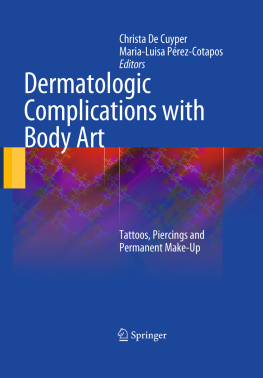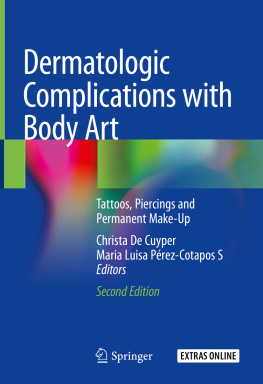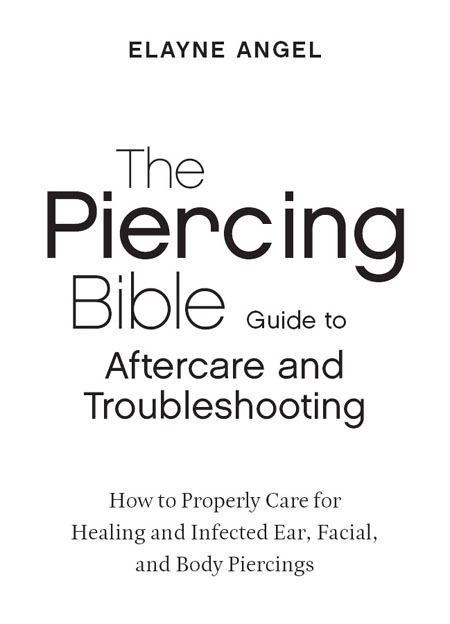Disclaimer: The information contained in this book is based on the experience and research of the author. It is not intended as a substitute for consulting with your physician or other health-care provider. Any attempt to diagnose and treat an illness should be done under the direction of a health-care professional. The publisher and author are not responsible for any adverse effects or consequences resulting from the use of any of the suggestions, preparations, or procedures discussed in this book.
Many of the designations used by manufacturers and sellers to distinguish their products are claimed as trademarks. Where the publisher is aware of a trademark claim, such designations, in this book, have initial capital letters.
Copyright 2009, 2013 by Elayne Angel
All rights reserved. Published in the United States by Ten Speed Press, an imprint of the Crown Publishing Group, a division of Random House, Inc., New York.
www.crownpublishing.com
www.tenspeed.com
Ten Speed Press and the Ten Speed Press colophon are registered trademarks of Random House, Inc.
These chapters were previously published in a different form as The Piercing Bible in 2009 by Crossing Press, an imprint of Ten Speed Press, Berkeley, CA.
Cover design by Katy Brown
Interior design by Jeff Brandenburg
Production by Colleen Cain
eISBN: 978-1-60774-585-3
First Ten Speed E-booklet Edition
v3.1
Contents
Introduction
Body piercing is not only my profession; it is my profound and lasting passion. I am still intrigued and delighted by piercing after devoting decades to the industry, performing over forty thousand piercings on other people, and receiving more than forty of my own. When I started working at a small business called Gauntlet in the 1980s, there was only one piercing specialty studio in the United States, and I was its manager. I went on to run my own piercing shop in New Orleans for over a dozen years before Hurricane Katrina brought that to an end.
Now I reside in Yucatn, Mexico, and do guest piercing at fine studios all around the United States. I write a monthly Q & A column for a body art industry trade magazine and teach annually at the Association of Professional Piercers (APP) conferences. Im volunteering for my fourth elected term of service on the Board of Directors, this time as president.
Over the years Ive witnessed tremendous growth and many improvements in my field, but one thing never changes: piercing breaks the protective barrier of the skin and leaves a foreign object in the body. Therefore there are risks of infection and other potential dangers. Piercings require appropriate care to heal, and sometimes even when everything is handled properly you can experience problems for no known reasonand Im here to help.
The art of body piercing is still evolving, and debates persist among professional piercers about basic aspects of the craft including regimens for aftercare and suggestions for troubleshooting. The information in this booklet is intended to distill the most sensible and effective advice available. Read on and educate yourself so you can properly care for a healing piercing or find the help you need to deal with the complications from a bungled job.
I am a professional in the field of piercing, not medicine; this booklet is not intended to provide medical advice, diagnosis, or treatment. There is no substitute for a hands-on consultation with an experienced piercer or, when needed, the counsel of a health-care provider. This publication is intended to supportnot replacethe relationships that exist between piercee and piercer or doctor.
1
Healing 101: Standard Aftercare
A piercing is a wound, albeit a unique one, because it is created intentionally and meant to heal with a foreign object present in the body. Even so, when we refer to aftercare, what were really discussing is wound care, which includes:
Minimizing factors that inhibit healing
Enhancing the healing process
Reducing the risk of infection
The Evolution of Aftercare
Years ago, the usual treatment for a healing piercing involved applying alcohol twice daily and frequently turning the jewelry so it wouldnt get stuck. This antiquated method is now viewed as a rather brutal abuse of a piercing.
Most over-the-counter wound care remedies are not appropriate because they are not intended for the long-term care piercings require, nor are they meant for use on puncture wounds. Piercers and piercees had to improvise because products specifically designed for the purpose of healing body piercings had yet to be introduced. Over the past few decades, piercers advocated an assortment of products, including Betadine, Hibiclens, alcohol, hydrogen peroxide, Neosporin, and Dial soap. Yet, today, these are all considered potentially detrimental to healing piercings. Bactine and other pierced ear solutions were also commonly suggested, but they, too, have fallen out of favor. See details in .
The methods of cleaning and caring for piercings have developed over time through trial and error. New regimens have come about through a better understanding of how piercings heal and access to more suitable products.
Consider the experience of an unfortunate man who got his nipple pierced in 1986:
That piercing took six or seven years (yes, years) to properly heal. I would attribute that to the aftercare we practiced back then. The usual choices were washing with Betadine (iodine scrub) or Hibiclens, a (possibly carcinogenic) surgical scrub. Yup, way too harsh. I cut the Hibiclens to half-strength a few years into it. See, aftercare was evolving even then. C.
Countless piercees have healed well using the commonsense aftercare guidelines offered here. That said, there is one fundamental principle about healing: human bodies vary . Not all piercees respond in the same way to the same products and procedures. Effort and patience are sometimes needed to figure out what works best to heal your piercing. You may even find that what worked well in the past does not have the same effect on a subsequent piercing. Variations in climate, water quality, your health, and many other factors impact the healing course.
Aftercare Advice: The Good, the Bad, and the Ugly
Understandably, you may feel confused by conflicting aftercare advice advocated by different piercers, friends, and medical professionals. Some methods are obsolete, others are too new, and still others are bizarre or downright harmful. Individuals on Internet forums may swear by off-the-wall products like rum or meat tenderizer, but beware of wacky care regimes such as these, or a strict no-cleaning approach.
Products designed for piercing care have inundated the market in recent years. Many are touted as the best or the only thing to use, so it can be confusing to decide which, if any, to buy. In general, it is prudent to follow a straightforward healing regimen that emphasizes health and hygiene rather than miracle products.
Your primary resource for care instructions should be a competent piercer. Most professionals will provide information that is similar to what is advised below, though in less detail than is described here. (No piercer has the time to go into this amount of depth!) Other care regimens might work, but if your piercers advice differs radically from everything discussed in this book, use caution and common sense.



